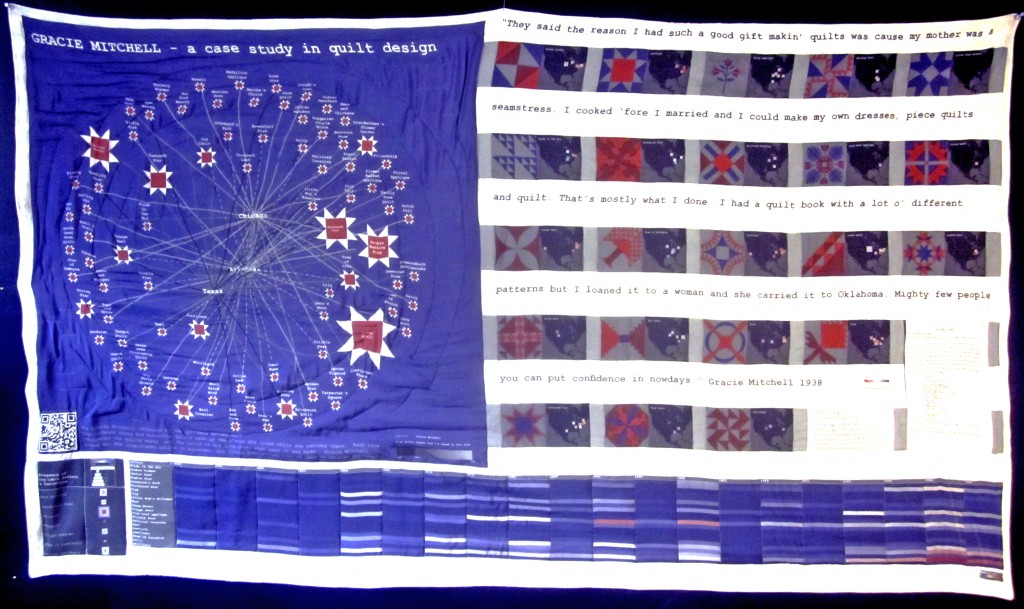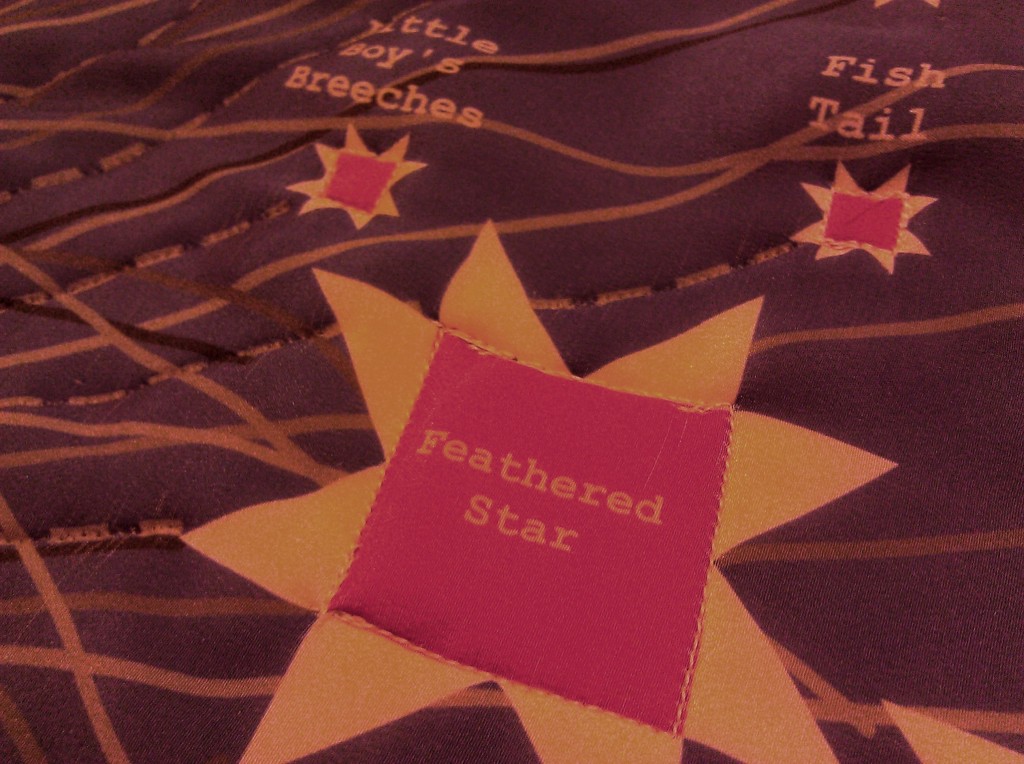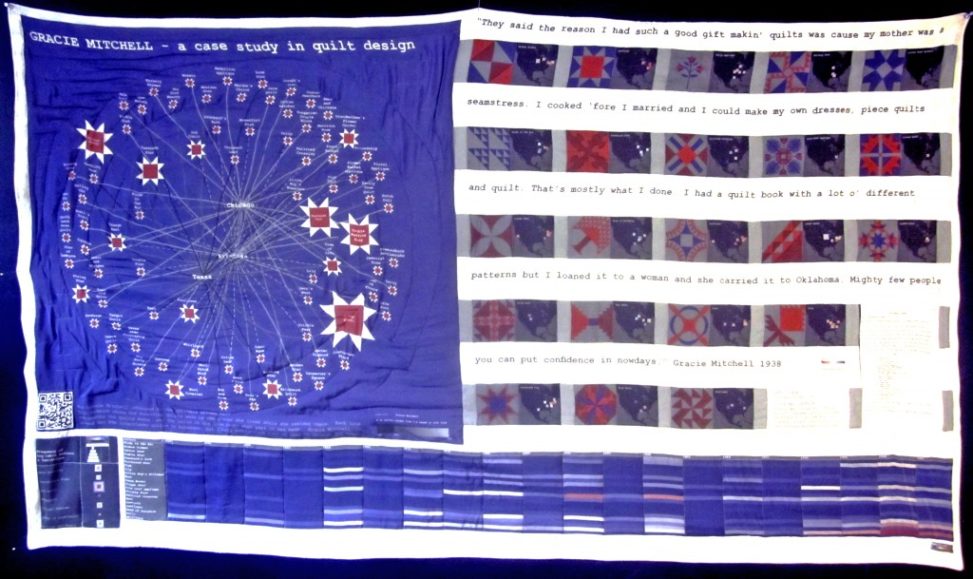 This data quilt, an information visualization, is the second in a series of textile objects that archive my ongoing digital humanities research project/blog; Runaway Quilt Project. Titled, “Maker Known”, the data quilt is a more focused version of the quilt “Maker Unknown”, and it is my final project for Information Visualization. There is a more detailed project write-up here.
This data quilt, an information visualization, is the second in a series of textile objects that archive my ongoing digital humanities research project/blog; Runaway Quilt Project. Titled, “Maker Known”, the data quilt is a more focused version of the quilt “Maker Unknown”, and it is my final project for Information Visualization. There is a more detailed project write-up here.

METADATA
Primary pattern SAWTOOTH STAR
Title “MAKER KNOWN”
Quiltmaker DEIMOSA I. WEBBER-BEY
Origin country UNITED STATES
Origin state/region NEW YORK/BROOKLYN
Date 2013
Style type SAMPLER
Predominant technique WHOLE CLOTH DIGITAL DESIGN
Exhibitions PRATT 2013 SILS SHOWCASE 5/10/12
Brackman #(s) 2138
Dimensions 40″X70″
Primary techniques DIGITAL FABRIC PRINTING, MACHINE QUILTING
Primary fiber CREPE DE CHINE
Primary fabric COTTON (BATTING)
Quilt stitches/inch TWELVE
Binding WORD CLOUD
Inscription type SUGGESTED CITATION
Contributors GARRON YEPA, ERICA SCHWARTZ
Other TWO-SIDED
The design represents an in-depth exploration of the twenty-two quilt block designs listed in former slave Gracie Mitchell’s WPA interview transcript. I learned to how to quilt from my grandmother, so I decided to design a top with infographics to help put Gracie Mitchell’s pattern selection in context and to visualize the data I found so that viewers can make their own meaning. After coming up with a whole cloth design for each side, based on datasets from the Quilt Index, I had help from a friend who designed original fabric prints for one side, and another friend who helped to create a file suitable for large-scale printing. I was able to then print on to fabric at the Digital Output Center on the Pratt Brooklyn campus, and I quilted at home by machine.
The main elements featured on the quilt top are a network (which shows the quilts made in each state that Gracie Mitchell lived), small blocks and maps (which show the design and the earliest instances of it in America), and a heat map (which shows how popular each design was during Gracie Mitchell’s lifetime). There is one quote from her interview transcript highlighted on the quilt top, where she comments on herself as a quilter and mourns a book of patterns that she lent to a friend and never got back. I actually borrowed a book from someone in my quilt group to complete this project, Barbara Brackman’s Encyclopedia of Pieced Quilt Patterns, but I returned it to her after twelve months and two warnings from my grandmother.
DATA QUILT CITATION
Webber-Bey, Deimosa. “Maker Known.” Runaway Quilt Project: Quilting During the Era of Slavery. Pratt Institute, 2013. <Occupy Wall Street: A Brief History of the 99%
